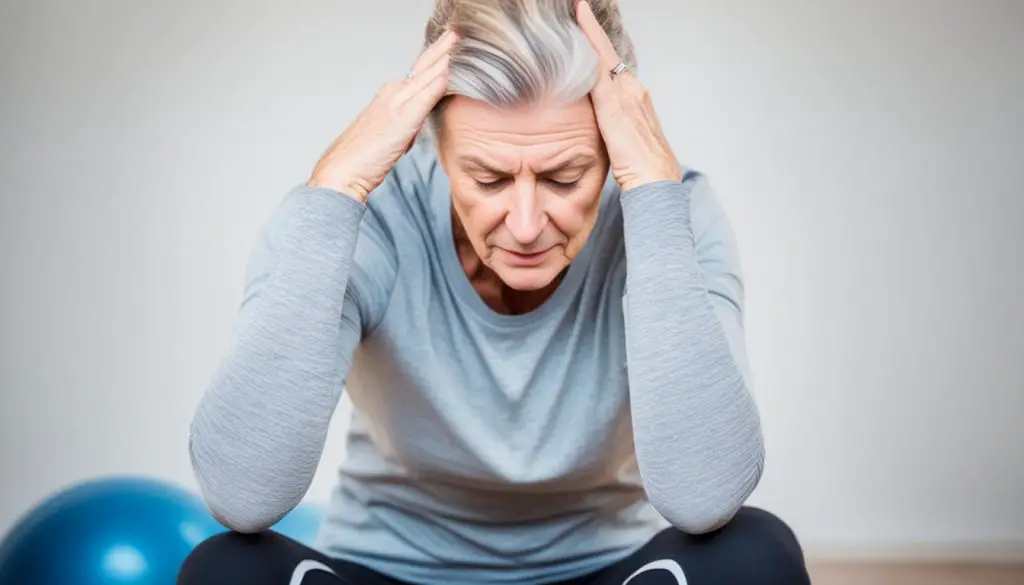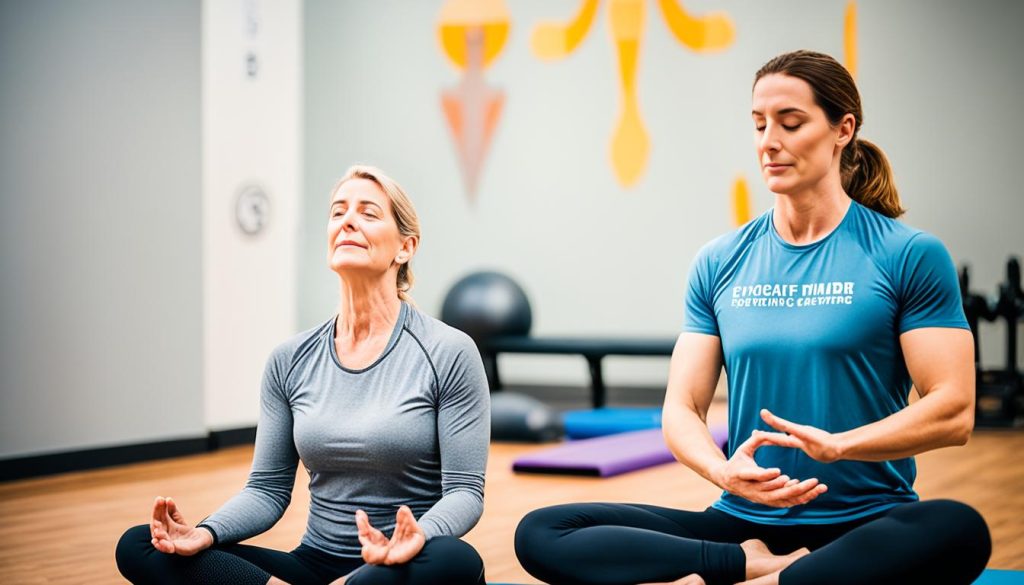As a man who spent a decade loving a woman with a chronic illness, I have experienced firsthand the challenges and complexities that come with supporting a partner who lives with chronic pain. My wife’s journey with endometriosis and fibromyalgia has profoundly shaped me into the person I am today, and it has sparked my passion for blogging. Through sharing our story, I have found solace and therapy in writing, allowing me to escape the new normal and advocate for my ill partner.
Not only has blogging provided a therapeutic outlet, but it has also helped us secure our future financially. By sharing our experiences and raising awareness about chronic pain, we have been able to connect with others in similar situations, build a supportive community, and even explore potential opportunities for financial stability.
Living with chronic pain has taught me the importance of adapting to a new normal. It has shown me the resilience and strength that my partner possesses, and it has taught me the value of patience, empathy, and compassion. Through my blog, I aim to provide safe exercise tips and recommendations for individuals who have partners with chronic pain.
My journey as a loving partner to a woman with a chronic illness has not been without its highs and lows. However, it has given me a deep understanding of the challenges faced by individuals living with chronic pain and the importance of finding safe and effective ways to support them. From building a chronic pain exercise program to discovering exercises that alleviate pain and improve overall well-being, I am committed to sharing my knowledge and experience to help others navigate the complexities of supporting a partner with chronic pain.
Understanding Chronic Pain and its Impact on Activity
Chronic pain is a common and debilitating condition that affects millions of people worldwide. It is defined as pain that lasts longer than expected healing time, typically more than three to six months. This persistent pain can have a significant impact on daily activities and overall quality of life.
Chronic pain interferes with physical functioning, limiting individuals’ ability to perform routine tasks such as walking, lifting, or even sitting for extended periods. Simple activities like carrying groceries, climbing stairs, or doing household chores can become challenging and painful.
The limitations imposed by chronic pain extend beyond the physical realm. It can cause fatigue, disrupt daily schedules, and lead to social withdrawal. The constant and often intense pain can take a toll on mental health, contributing to depression, anxiety, and a decreased sense of well-being.
Understanding the impact of chronic pain on activity is crucial in finding safe exercise solutions. By recognizing the limitations imposed by chronic pain, individuals can develop personalized exercise programs that address their specific needs and avoid exacerbating their pain.
Impact of Chronic Pain on Daily Activities:
- Difficulty performing routine tasks
- Limitations in mobility and range of motion
- Fatigue and decreased energy levels
- Disruptions in daily schedules
- Decreased participation in social and recreational activities
- Decreased overall quality of life
| Activity | Chronic Pain Impact |
|---|---|
| Carrying groceries | Difficult due to pain and decreased strength |
| Climbing stairs | Pain and limited joint mobility make it challenging |
| Household chores | Tasks that involve bending, lifting, or repetitive movements can trigger pain |
| Participation in recreational activities | Decreased ability to engage in physical activities and socialize |
Chronic pain’s impact on activity is multi-faceted, affecting individuals physically, mentally, and emotionally. By understanding these limitations, we can develop strategies and safe exercise approaches that enable individuals with chronic pain to regain control of their lives and improve their overall well-being.
Breaking the Cycle of Inactivity
When you experience chronic pain, your instinct may be to rest and avoid movement in order to reduce pain. However, prolonged inactivity can have negative effects on your body and mind. It can lead to muscle atrophy, poor posture, and other health problems. The fear-avoidance model of pain explains how the fear of pain or injury can create a self-limiting cycle of inactivity and increased disability. This cycle can also threaten your independence and overall well-being.
It is important to break this cycle and find ways to incorporate safe exercise into your daily routines. By doing so, you can better manage your chronic pain and improve your quality of life. Engaging in regular physical activity can have a positive impact on both your physical and mental well-being.
Physical activity promotes the release of endorphins, which are natural pain-relieving chemicals in the body. It also helps to strengthen muscles, improve flexibility, and reduce fatigue. By participating in safe exercises, you can reduce pain sensitivity, improve sleep, and enhance your overall mood.

By incorporating physical activity into your daily routine, you can gradually increase your tolerance to pain and improve your ability to perform daily tasks. Over time, you may find that your pain levels decrease and your overall physical functioning improves.
To break the cycle of inactivity and incorporate safe exercise into your life, it is important to work with a healthcare professional who can provide guidance and personalized recommendations. They can help you develop an exercise plan that is tailored to your specific needs and limitations.
Remember, it’s crucial to start slow and listen to your body. Begin with activities that are low-impact and gradually increase your intensity as your body adapts. Use proper form and technique to ensure you are engaging the correct muscles and minimizing the risk of injury.
By breaking the cycle of inactivity and incorporating safe exercise into your life, you can regain control over your chronic pain and improve your overall well-being. Stay committed to your exercise routine and seek support from healthcare professionals to help you along the way.
The Benefits of Physical Activity for Chronic Pain
Engaging in regular physical activity can have significant benefits for individuals living with chronic pain. Not only can exercise help alleviate pain, but it also contributes to improving muscle strength, reducing fatigue, and enhancing overall well-being. Incorporating physical activity into your daily routine can have a positive impact on your physical and mental health.
Reduced Pain Sensitivity
One of the key benefits of physical activity for chronic pain is its ability to reduce pain sensitivity. Regular exercise has been shown to stimulate the release of endorphins, which are natural pain-relieving chemicals in the body. These endorphins help minimize the perception of pain, making it more tolerable and manageable.
Improved Muscle Strength
Chronic pain often leads to muscle weakness due to reduced physical activity. Engaging in exercises that target specific muscle groups can help strengthen those muscles and improve overall mobility. Strengthening the muscles surrounding the affected area can also provide added support and stability, reducing the strain on joints and alleviating pain.
Reduced Fatigue
Individuals with chronic pain often experience persistent fatigue, which can further impact their quality of life. Regular physical activity has been shown to reduce fatigue levels and increase energy levels. By participating in activities that elevate your heart rate and engage your muscles, you can boost your stamina and combat the debilitating effects of chronic pain-related fatigue.
Improved Sleep Quality
Chronic pain commonly disrupts sleep patterns, leading to insomnia and poor sleep quality. Engaging in physical activity during the day can promote better sleep by regulating your body’s internal clock, reducing anxiety and depression, and helping you achieve the restorative sleep needed to manage chronic pain effectively.
Manage Chronic Pain Conditions
Physical activity has been found to be particularly beneficial for managing specific chronic pain conditions such as fibromyalgia and neck/shoulder pain. Exercise helps improve joint flexibility, reduces muscle tension, and promotes blood flow, all of which can alleviate pain and enhance mobility in these specific areas.
Emotional Well-being
Regular physical activity has significant positive effects on mental health. Exercise stimulates the release of endorphins, which promote feelings of happiness and well-being. This can help alleviate symptoms of depression and anxiety that are often associated with chronic pain. Additionally, participating in physical activity provides a sense of accomplishment and empowerment, boosting self-confidence and improving overall mood.
As you can see, physical activity offers a multitude of benefits for individuals living with chronic pain. Incorporating regular exercise into your routine can help alleviate pain, strengthen muscles, reduce fatigue, improve sleep quality, and enhance your overall well-being. Remember to start slow, listen to your body, and consult with a healthcare professional before embarking on any exercise program.
Finding the Right Exercise Approach
When it comes to exercise recommendations for chronic pain, there is no one-size-fits-all approach. However, engaging in any form of physical activity, even in minimal amounts, is generally recommended for individuals with chronic pain. Incorporating safe exercise guidelines and precautions can make exercise more manageable and reduce the risk of injury or exacerbating pain.
One important aspect of safe exercise is modifying exercises to suit your needs and capabilities. This may involve adjusting the intensity, duration, or range of motion to avoid triggering pain. Additionally, maintaining proper posture during exercises can help minimize strain on your joints and muscles, reducing the risk of further discomfort.
A “start low, go slow” approach is crucial when beginning an exercise program for chronic pain. Gradually increase your exercise intensity and duration over time, allowing your body to adapt and build strength without overexerting yourself. This approach helps reduce the risk of overdoing it and experiencing post-exercise pain.
It is always recommended to consult a healthcare professional before starting or modifying any exercise routine. They can provide personalized guidance and help determine appropriate exercise levels based on your specific condition and fitness goals. Tools like the Physical Activity Readiness Questionnaire (PAR-Q) can also assist in assessing your readiness for physical activity.
| Exercise Recommendations for Chronic Pain | Safe Exercise Guidelines |
|---|---|
| Engage in any form of physical activity | Modify exercises to reduce the risk of falls |
| Start with minimal amounts of exercise | Maintain proper posture during exercises |
| Gradually increase exercise intensity | Use a range of motion that doesn’t increase pain |
| Consult a healthcare professional | Use tools like the PAR-Q to assess readiness |
Remember, finding the right exercise approach for chronic pain requires patience and self-awareness. Listen to your body, and if an exercise causes increased pain or discomfort, modify or stop the activity. By following safe exercise guidelines and seeking professional guidance, you can create a tailored exercise routine that benefits your overall well-being.

Safe Exercise Ideas for Chronic Pain
When dealing with chronic pain, finding safe and effective exercise options is crucial for maintaining physical and mental well-being. Engaging in regular physical activity can help reduce pain sensitivity, increase muscle strength, and improve overall quality of life for individuals with chronic pain. Here are some safe exercise ideas to consider:
1. Walking
Walking is a low-impact exercise that can be easily incorporated into your daily routine. It helps strengthen muscles, improve cardiovascular health, and increase flexibility. Start with short walks and gradually increase the duration and intensity over time.
2. Low-Impact Activities
Low-impact exercises such as swimming, biking, or using an elliptical machine are gentle on the joints while still providing a cardiovascular workout. These activities can help improve endurance, flexibility, and muscle tone without putting excessive strain on your body.
3. Household Tasks
Everyday chores like sweeping, vacuuming, or gardening can also contribute to your overall movement and physical fitness. These activities engage different muscle groups and can be a part of your safe exercise routine.
4. Stretching Activities
Regular stretching can help improve flexibility, reduce muscle tension, and alleviate stiffness associated with chronic pain. Consider incorporating activities like tai chi or yoga into your exercise routine to enhance relaxation and promote joint mobility.
5. Aquatic Exercises
Aquatic exercises, such as water aerobics or hydrotherapy, provide a safe and low-impact option for individuals with chronic pain. Exercising in water helps reduce stress on the joints while still allowing for strength-building and cardiovascular benefits.
6. Everyday Activities
Don’t underestimate the power of everyday activities like doing laundry or cooking. These tasks require movement and can contribute to overall physical activity levels. Find ways to stay active throughout your daily routine.
Remember, it’s important to consult with a healthcare professional or physical therapist before starting any new exercise program, especially if you have chronic pain. They can provide personalized recommendations and ensure that the exercises you choose are safe and appropriate for your specific condition.
Pacing and Self-Care in Chronic Pain Exercise
Pacing is a crucial element in managing chronic pain through exercise. By understanding and practicing pacing techniques, you can avoid overexertion and minimize the risk of worsening pain. Pacing involves finding the right balance between activity and rest, allowing your body to adapt gradually and build strength over time. It’s a personalized approach that focuses on your unique abilities and limitations.
To effectively pace your chronic pain exercise routine, it’s essential to:
- Listen to your body: Pay attention to any signals or cues your body gives you during physical activity. If you experience pain or discomfort, take a break or modify the exercise to reduce strain and avoid aggravating your condition.
- Avoid overexertion: Pace yourself by starting with low-intensity exercises and gradually increasing the duration and intensity over time. Pushing too hard can lead to increased pain and potential setbacks in your progress.
- Practice self-awareness: Develop a keen sense of self-awareness when it comes to your pain levels and limitations. Recognize your body’s unique responses to different activities and learn to distinguish between productive discomfort and harmful pain.
- Avoid worsening pain: As you engage in chronic pain exercise, it’s crucial to monitor your pain levels. If you notice that your pain is worsening or becoming more intense after an activity, it’s essential to modify or stop the exercise to prevent further harm.
- Seek guidance from medical professionals: Consulting with your healthcare provider or a qualified physical therapist can provide valuable guidance and ensure that you’re engaging in safe exercise practices. They can help you create an exercise plan tailored to your specific needs and monitor your progress.
Self-care is a fundamental aspect of chronic pain exercise. By prioritizing self-care, you can enhance your overall well-being and optimize the benefits of physical activity. Self-care includes practicing relaxation techniques, managing stress levels, and incorporating strategies such as heat or cold therapy to alleviate pain.
Remember, finding the right balance in chronic pain exercise is a journey that requires patience, self-awareness, and guidance. By pacing yourself, practicing self-care, and seeking professional advice, you can safely and effectively incorporate exercise into your routine, improving your quality of life and managing your chronic pain.
Image: 
| Benefits of Pacing in Chronic Pain Exercise | Guidelines for Pacing |
|---|---|
|
|
Getting Started with Exercise
Starting an exercise program can be a beneficial step in managing chronic pain. However, before you begin, it is important to consult a healthcare professional. They can provide personalized guidelines based on your individual health status and activity level. By obtaining professional guidance, you can ensure that the exercise program is safe and suitable for your specific needs.
To assess your readiness for Physical Activity, you can also use the Physical Activity Readiness Questionnaire (PAR-Q). This questionnaire helps determine if there are any factors that may require modifications to your exercise routine. Answering the PAR-Q honestly and accurately will provide valuable insight into your current fitness level, allowing you to tailor your exercise program accordingly.
When starting exercise with chronic pain, it is essential to find activities that you enjoy. Enjoyable exercises increase the likelihood of maintaining an active lifestyle in the long term. Whether it’s walking, dancing, swimming, or engaging in recreational sports, choose activities that bring you pleasure and satisfaction. Not only will this make your exercise routine more enjoyable, but it will also contribute to your overall well-being.
When initiating an exercise program, it is crucial to start slowly and gradually increase the intensity. Rushing into high-impact or strenuous exercises can lead to injury and setbacks. By taking a gradual approach, you give your body time to adapt and build strength, enhancing your overall exercise experience and minimizing the risk of aggravating your chronic pain.
Remember, getting started with exercise may feel challenging at first, but with the right guidance, personalized guidelines, and a positive mindset, you can make meaningful progress in managing your chronic pain through physical activity.
Complementary Approaches to Chronic Pain Management
While medical treatments and physical therapy play a crucial role in managing chronic pain, incorporating complementary approaches can enhance pain management and overall well-being. Alternative pain management techniques and non-pharmacological treatments offer additional options for individuals seeking relief from chronic pain. One such approach is exercise, which has been proven to be effective in reducing pain and improving quality of life.
Exercise is a non-pharmacological treatment option that can be tailored to individual needs and capabilities. It helps strengthen muscles, improve flexibility, and reduce fatigue, all of which are important for managing chronic pain. Moreover, exercise has been shown to have positive effects on mental health, promoting a sense of well-being and reducing symptoms of depression and anxiety.
Incorporating regular exercise into your routine can be a complementary approach to managing chronic pain. It is important to find exercises that are suitable for your specific condition and preferences. Low-impact exercises, such as walking or swimming, can be gentle on the joints while providing cardiovascular benefits. Strength-building exercises help improve muscle tone and stability, which can relieve pain and improve function. Stretching activities can enhance flexibility and reduce stiffness, while aquatic exercises provide a low-impact option for strengthening muscles without placing excessive stress on the joints.
It is important to maintain proper form and technique while exercising to prevent injury and aggravating pain. Starting with low-intensity exercises and gradually increasing the intensity allows your body to adapt and minimize the risk of overexertion. Listening to your body and respecting its limits is key. If you experience increased pain or discomfort during or after exercise, it is important to consult with a healthcare professional to modify your exercise routine accordingly.
Non-Pharmacological Treatments for Chronic Pain
In addition to exercise, there are other non-pharmacological treatments that can complement traditional medical approaches to chronic pain management. These include:
- Cognitive Behavioral Therapy (CBT): A psychotherapy approach that helps individuals change their negative thoughts and behaviors related to pain, improving coping skills and quality of life.
- Acupuncture: A traditional Chinese medicine technique involving the insertion of thin needles at specific points on the body to relieve pain and promote healing.
- Massage Therapy: Manipulation of soft tissues to reduce muscle tension, promote relaxation, and alleviate pain.
- Mindfulness Meditation: A practice that involves focusing attention on the present moment, promoting relaxation and reducing stress and pain perception.
Integrating these complementary approaches into your chronic pain management plan can provide a holistic and comprehensive approach to pain relief. Remember to consult with your healthcare professional to determine the most suitable and effective treatment options for your specific needs.

Comparison of Complementary Approaches to Chronic Pain Management
| Treatment | Description | Benefits |
|---|---|---|
| Exercise | An activity that strengthens muscles, improves flexibility, and reduces fatigue. | – Reduces pain – Improves muscle strength and stability – Enhances flexibility – Promotes overall well-being |
| Cognitive Behavioral Therapy (CBT) | A psychotherapy approach that helps individuals change negative thoughts and behaviors related to pain. | – Improves coping skills – Reduces pain perception – Enhances quality of life |
| Acupuncture | Insertion of thin needles at specific points on the body to relieve pain and promote healing. | – Alleviates pain – Promotes relaxation – Enhances overall well-being |
| Massage Therapy | Manipulation of soft tissues to reduce muscle tension, promote relaxation, and alleviate pain. | – Reduces muscle tension – Relieves pain and stiffness – Enhances relaxation |
| Mindfulness Meditation | A practice that involves focusing attention on the present moment to promote relaxation and reduce pain perception. | – Reduces stress and anxiety – Enhances relaxation – Alleviates pain |
The Role of Attitude and Support in Chronic Pain Exercise
When it comes to chronic pain exercise, attitude plays a crucial role in your journey towards better health and well-being. Adopting a positive approach and viewing chronic pain as a treatable condition can significantly impact your ability to function better and live a happier, more active life.
Support from healthcare professionals, such as physical therapists or exercise specialists, is also instrumental in your chronic pain management. Their expertise and guidance can help you develop a personalized exercise program tailored to your specific needs, ensuring maximum effectiveness and safety.
Building a supportive team of professionals and loved ones around you can provide valuable guidance and motivation throughout your chronic pain exercise journey. Having the support of those who understand and believe in your goals can greatly enhance your commitment, accountability, and ultimate success.
The Power of a Positive Approach
Approaching chronic pain exercise with a positive mindset can make a world of difference. Rather than focusing on limitations and setbacks, embrace the possibilities of what you can achieve with safe and targeted exercises.
By nurturing a positive attitude, you can shift your perspective and increase your confidence in managing chronic pain. Recognize that exercise is not only about physical health but also a means to boost your mental and emotional well-being. Celebrate every milestone, no matter how small, and use your progress as a source of motivation to keep pushing forward.
The Importance of Support from Healthcare Professionals
Seeking support from healthcare professionals who specialize in chronic pain exercise is vital for long-term success. These professionals can assess your condition, provide personalized recommendations, and help you create a tailored exercise program that addresses your unique needs and challenges.
Physical therapists, for example, can guide you in selecting appropriate exercises that gradually build strength, flexibility, and endurance while minimizing the risk of exacerbating your pain. They can also teach you proper techniques, posture, and modifications to ensure your safety during exercise sessions.
Building Your Supportive Team
Aside from professional support, surrounding yourself with a caring and understanding network can make a significant difference in your chronic pain exercise journey. Share your goals, progress, and challenges with your loved ones, and encourage them to be actively involved in supporting you along the way.
Consider joining support groups or online communities where individuals with chronic pain can share their experiences, insights, and tips. Connecting with others who face similar challenges can provide a sense of belonging, validation, and encouragement, fostering a supportive environment that fuels your motivation.
Remember, you don’t have to navigate chronic pain exercise alone. Embrace the power of a positive attitude, seek support from qualified healthcare professionals, and build a community that understands and supports your journey towards better health and well-being.
| Benefits of a Positive Attitude | Examples of Healthcare Professional Support |
|---|---|
|
|
Conclusion
Incorporating safe exercise into your daily routines is essential for managing chronic pain. Exercise offers numerous benefits, including reducing pain, improving flexibility and strength, reducing fatigue, and promoting overall well-being. By adopting the right approach, providing support, and practicing self-care, you can help your partner with chronic pain achieve a more active and fulfilling lifestyle.
Chronic pain can be a challenging condition to navigate, but by incorporating safe exercise, you can effectively manage pain and improve physical and mental well-being. Whether it’s low-impact activities like swimming or biking, stretching exercises, or even performing everyday tasks, finding the right exercise approach is key.
Remember to pace yourself, listen to your body, and seek guidance from healthcare professionals. Starting slowly and gradually increasing intensity can help avoid overexertion and minimize the risk of injury. Additionally, complementing exercise with other non-pharmacological treatments and maintaining a positive attitude can further enhance chronic pain management.
Supporting a partner with chronic pain requires empathy, understanding, and patience. By educating yourself about their condition and actively engaging in their exercise routine, you can help create a supportive environment for their journey towards improved pain management and a better quality of life. Together, you can conquer the challenges of chronic pain and embrace a more active and fulfilling future.
